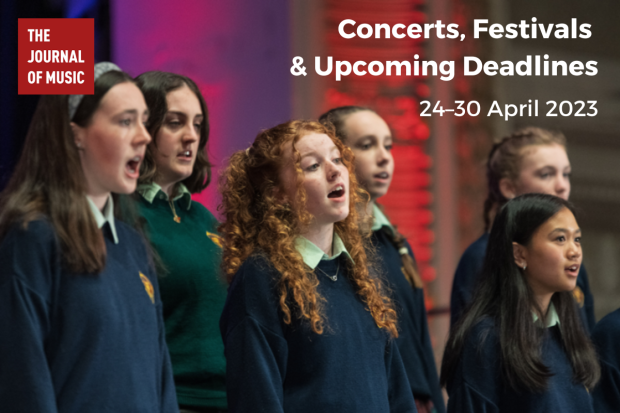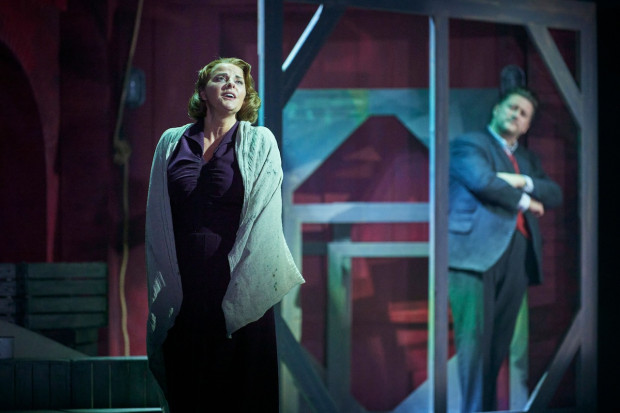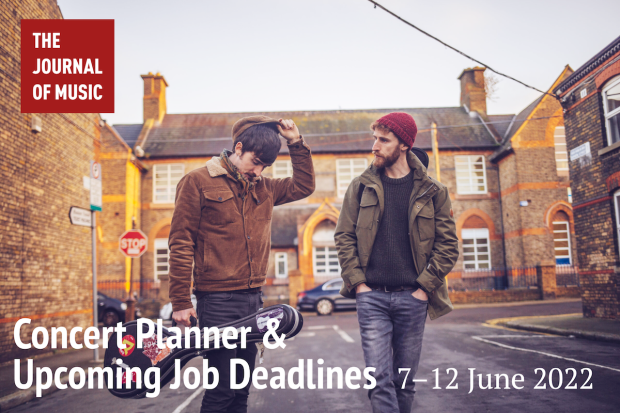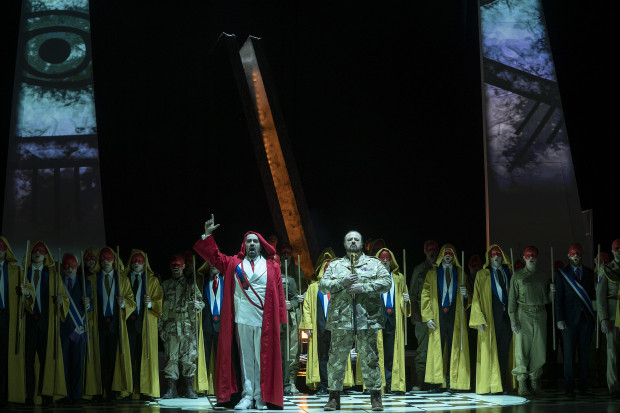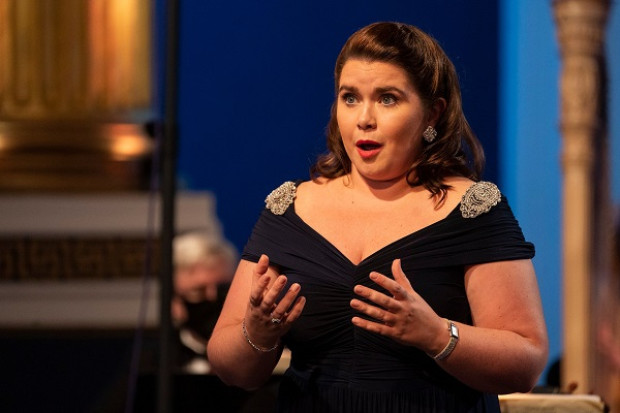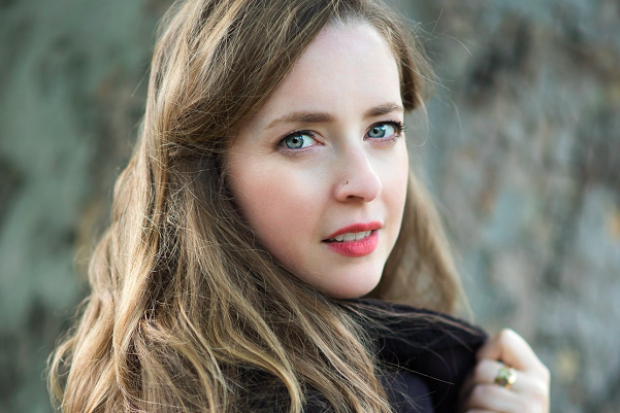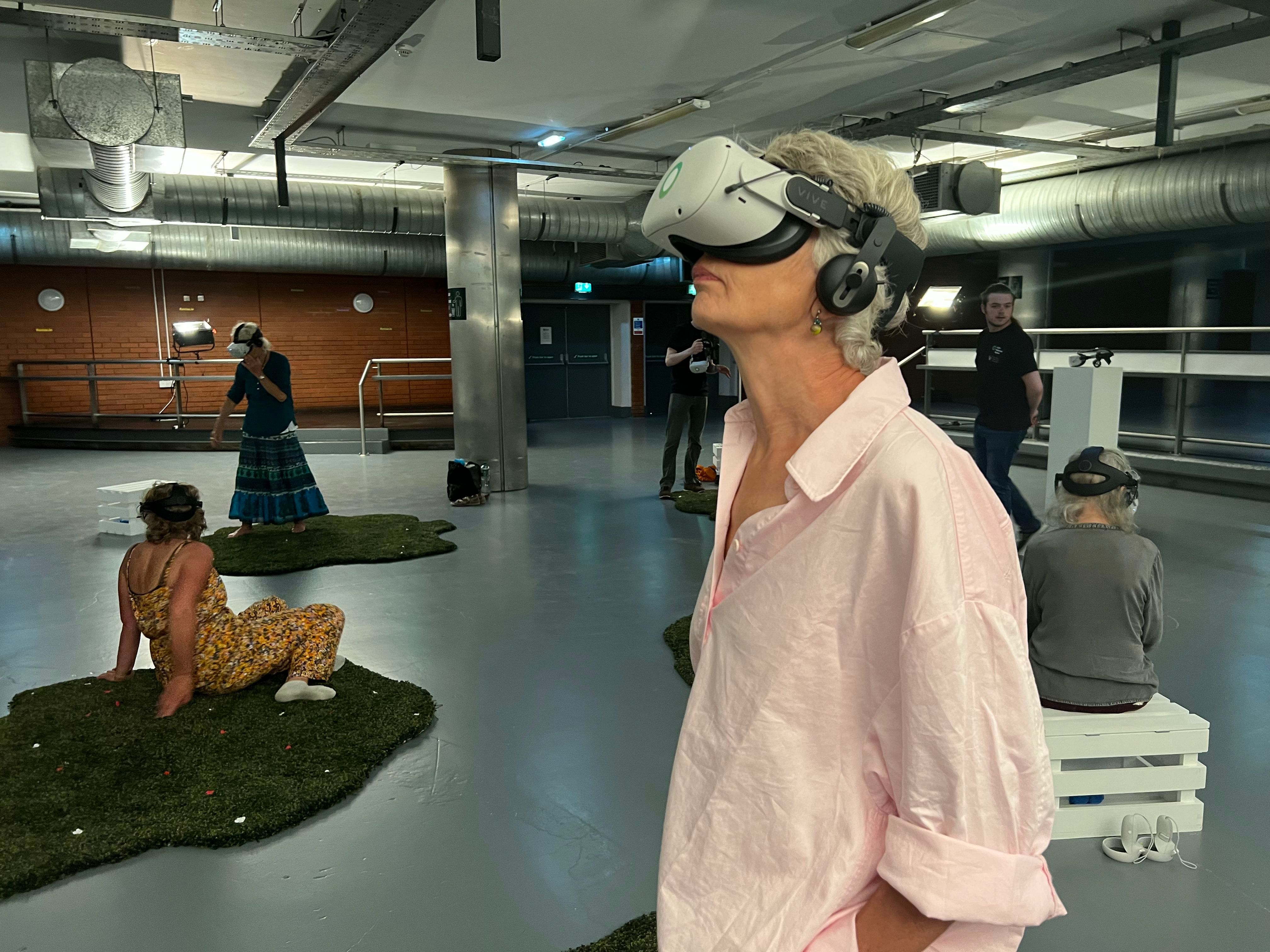
Members of the audience experiencing the VR opera 'Out of the Ordinary / As an nGnách'. (Photo: Lea Försterling / Irish National Opera)
Expanding the Boundaries of Opera
One of few silver linings of the pandemic was that it forced artists to think creatively about alternative ways of presenting their work to audiences outside of live performance. After having produced film versions of Amanda Feery’s A Thing I Cannot Name and Gerald Barry’s Alice’s Adventures Under Ground as well as their highly successful streaming of 20 Shots of Opera, Irish National Opera have certainly been at the forefront in looking for different ways to present their productions. This year’s season begins with an exploration of virtual reality opera in the form of Finola Merivale’s Out of the Ordinary/As an nGnách. Billed as a ‘community opera’, the work is the result of an extensive collaboration process involving the input of communities from Dublin to the west coast of Ireland, whose various inputs were used as raw material that was whittled down into the final product by a creative team that also involved librettist Jody O’Neill, director Jo Mangan and VR companies Virtual Reality Ireland and Algorithm.
O’Neill’s bilingual libretto tells the story of a community who have been forced to leave their homeland after exploiting its national resource to the point of rendering it inhabitable. Led by Narva, the community’s spiritual leader, they board a ship for a new land only to be plagued at every step by Daol, an ever-present force of nature, who whips up a storm that swallows the ship down into the depths of the ocean. When the boat eventually comes to the surface, the community find themselves in a lush paradise which they proceed to wreck in much the same fashion as their original homeland. That all this is intended as an allegorical reflection on our current ecological predicament is not one of the production’s most subtle points, and much of the libretto is given over to endless lamentations on what seems from the get-go to be a foregone conclusion.
While drama might be lacking, the real draw is the VR animation, which works very effectively in tandem with Merivale’s music. The audience members – who are limited to six per viewing – each don a headset and are assigned their own personal space in the Dean Arts Studio for the duration of the performance. As someone who has experienced VR in several art gallery installations and been consistently underwhelmed, the animation was entirely convincing and certain moments – such as when the ship that the community are travelling on is teetering over the brink of a whirlpool – even test one’s own sense of balance.
Merivale’s music is very effective in accompanying the animation even if stylistically it relies largely on quite conventional contemporary music textures. For example, the opening begins with the standard halo of sustained strings while the climax towards the final destruction of the new land is a mixture of rapid, swirling figurations on the strings and woodwinds propelled by syncopated Bartók pizzicatos on the double bass that become progressively more frequent as the music intensifies. The range of colours extracted from the limited chamber ensemble of violin, viola, cello, double bass, flute and clarinet is quite impressive and the vocal writing for soprano Daire Halpin and mezzo-soprano Naomi Louisa O’Connell is well shaped. Despite a slightly dry quality to the recording, the score manages to create a polyphonic effect with the ensemble, singers and choir interacting in different layers. However, perhaps the best moment musically is when the ship journeys underwater and the score resorts to a more electronic sound world that is more sonically immersive and better able to fill out the virtual space.
While the creative team say they hope that ‘the work will start conversations around opera, technology and art, who it’s for and what it can be’, I imagine that most audience members will be too taken with the pure novelty of the VR experience to seriously ponder these questions. In truth, the only operatic thing about the production is that it happens to feature two classically trained operatic singers, neither of whose lines are strongly connected with any of the sullen figures that drift anonymously through the animation. Thus, the operatic element is really reduced to a soundtrack for the VR experience and perhaps a more relevant question is whether opera really works all that well in carrying out this function.
While I doubt Out of the Ordinary/As an nGnách will set off a trend for VR operas, the experience is nevertheless an engaging one and that – as part of the Dublin Fringe Festival – constitutes a courageous attempt to expand the boundaries of opera and bring it to new audiences.
Out of the Ordinary/As an nGnách continues at the Dean Arts Studio in Dublin until 25 September with six performances a day between 11am and 5pm. Visit www.irishnationalopera.ie.
Published on 15 September 2022
Adrian Smith is Lecturer in Musicology at TU Dublin Conservatoire.












